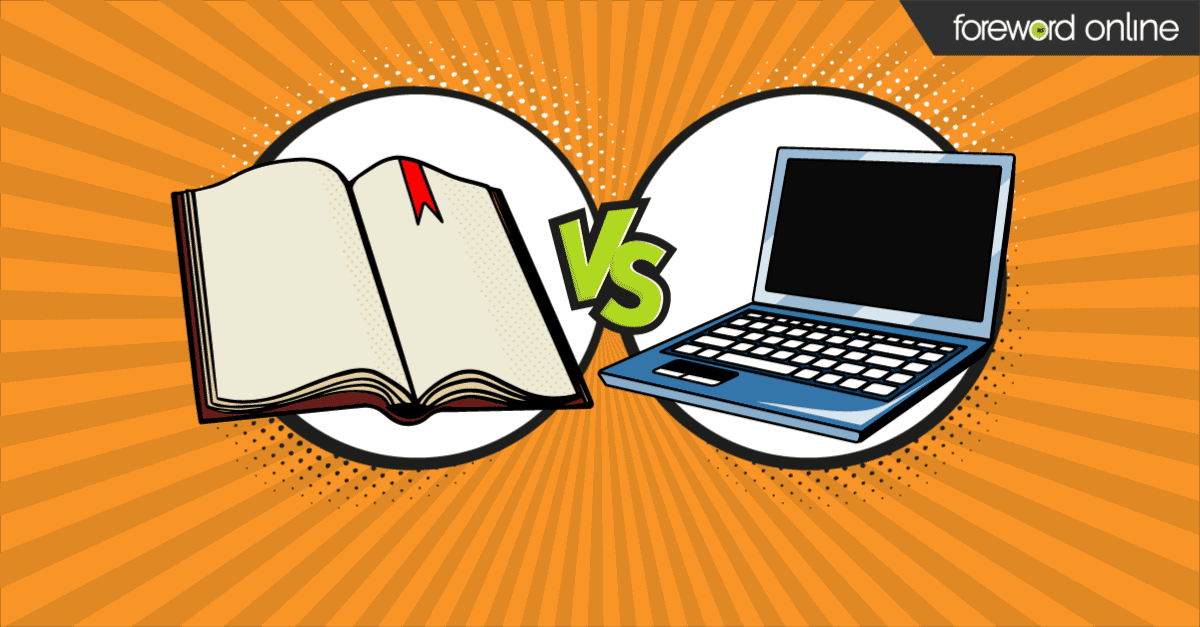Although current surveys show faculty have no preference about whether students buy digital or print books, that could change in light of new research from a pair of reading experts at the University of Maryland.
UMD’s Lauren Singer and Patricia Alexander published a piece in Conversation in October, 2017, which ran in the Chicago Tribune, Business Insider and other popular publications. It offers details from three studies that compared print and digital comprehension among college students reading newspaper articles and fiction excerpts.
The studies showed students read digital formats faster — at a cost. Students gleaned the main idea from digital texts as well as they did from print. But they absorbed fewer details, which suggests students are much better off reading print for in-depth, university-level study.
Students believed their comprehension of the digital texts was better, however, so it’s not surprising that they overwhelmingly preferred digital to print, too. Most of us are more likely to favor formats that give us a sense of competence.
A bind for instructors and administrators
Digital bias could present a challenge for teachers who want to encourage deeper reading and for administrators who want to see improved outcomes. Faculty will either force students to purchase print textbooks for classes — which could raise student costs — or they’ll aim to persuade them that slower reading is better.
The latter could be especially difficult, if not impossible. Students’ preference for fast reading stems, at least partly, from years of experience with timed standardized tests. By virtue of design, such tests shape the impression that speed is synonymous with skill. In-class teacher-made assessments are often timed, too, which gives students the idea from an early age that reading slowly is the same as reading badly.
In college-level courses, nothing could be further from the truth. Comprehending a complex literary text, for instance, requires multiple levels of reading. In many cases, it’s wise for a student to stop and think — visualize what’s happening or reread key passages to uncover layers of possible meaning. In my experience, many students have been trained to believe that reading slowly and rereading means they’re stupid. Or, they express the view that challenging materials, which can’t be easily skimmed, are too hard. Such books should have been written “better,” they say.
A teacher’s best choice for now might be to adopt only print titles. They can reduce the student costs if they avoid the newest editions and order their texts early enough in the semester to guarantee a large selection of used books.
However, being forced to use print might upset students— and not just because an increasing number of digital natives come from high schools with 1:1 tablet programs. After years of being rewarded for fast reading, it would be hard to accept the notion of slowing down, even if a teacher has said it will improve retention.
Reimagining eBooks
Developers of digital textbooks might offer a solution for this bind, if they draw on recent research into the mechanics of reading — studies of the way our eyes move while ingesting lines on a screen or a page.
Digital books are typically designed to mimic the print experience: black words on a white screen. This limits the potential virtual texts may have for improving our comprehension, according to a 2016 article in the Atlantic, which cites research from Stanford and the University of Texas at Austin.
It’s possible to engineer digital texts in a way that makes up for physiological differences, which have an impact on comprehension. Strategically adding color to words, for instance, helps the eyes “sweep” across the text more efficiently. It helps us take in more meaning faster.
“We all take in information in different ways. Some people read more quickly and retain more information when lines are shorter, or when fonts are bolder, or in different colors,” the article points out.
Linguist Nick Lum developed a product called BeeLine, which changes word colors onscreen in a way that increases the accuracy of our eye movements. BeeLine has found a great following among readers diagnosed with dyslexia and ADHD. More people may prefer digital as the technology evolves.
Any advancement that increases students’ capacity to absorb challenging material will undoubtedly curry favor among K–12 and college educators alike.





![Navigating Complex Course Material Trends [White Paper]](https://foreword.mbsbooks.com/hubfs/Navigating-complex-course-material-trends-FO.jpg)
